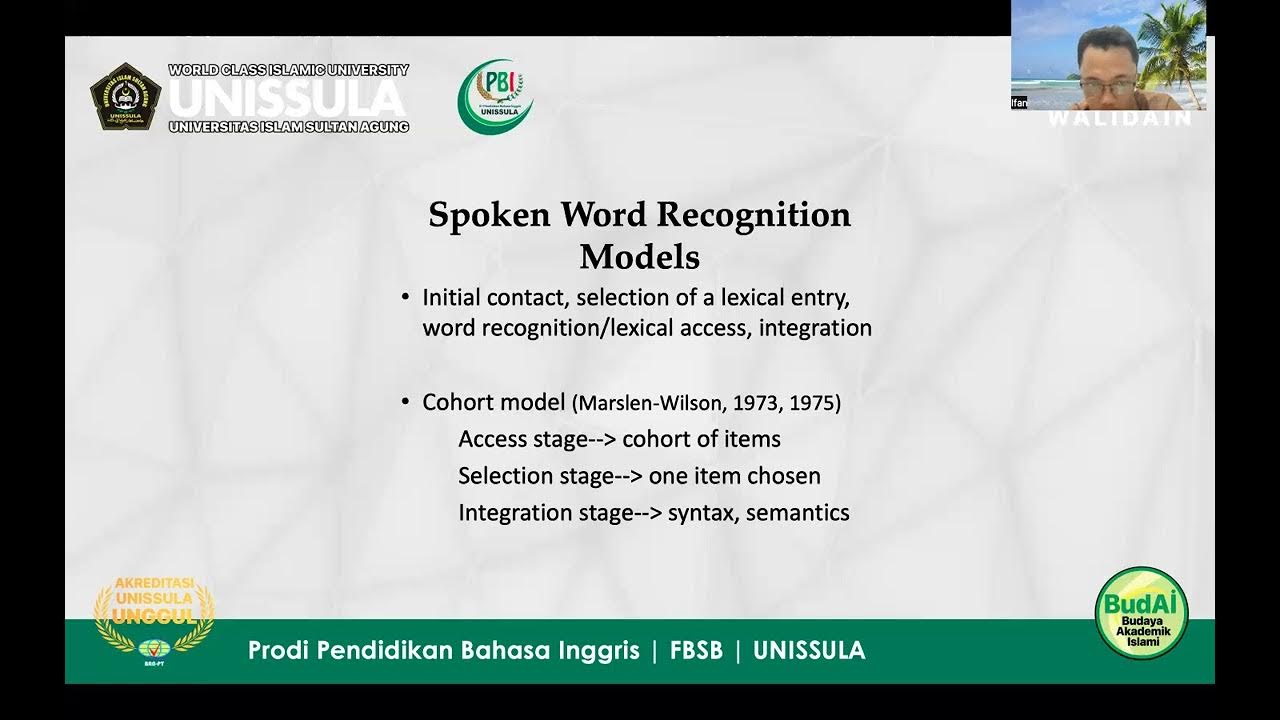Individual differences in 2nd language
Summary
TLDRIn this video, Camila explores individual differences among second language learners, highlighting factors like intelligence, aptitude, learning styles, personality, motivation, attitudes, beliefs, identity, ethnic affiliation, and age of acquisition. She explains how these elements influence language learning, emphasizing the importance of accommodating diverse student needs in the classroom. The video encourages teachers to adapt their instruction to enhance language learning experiences.
Takeaways
- 🧠 Intelligence and its relation to language learning: Higher IQ may be more related to understanding language rules and less to communicative ability.
- 📚 Language Learning Aptitude: Aptitude tests like MLAT and PLAP measure abilities such as identifying new sounds and memorizing words, which can vary among learners.
- 🔍 Analytical Skills: Children with strong language analysis skills are often the most successful in language learning programs that don't focus on grammar.
- 👀 Learning Styles: There are three main learning styles—visual, aural, and kinesthetic—which influence how learners absorb and retain information.
- 🤔 Personality Impact: Certain personality traits like inhibition can discourage risk-taking necessary for language learning, especially in adolescents.
- 🍻 Pronunciation and Inhibition: Reducing inhibition, such as through small amounts of alcohol, has been shown to improve pronunciation in some studies.
- 💪 Motivation and Attitudes: Positive motivation is linked to a willingness to continue learning, with models like Sultan Dornier's three phases of motivation.
- 👥 Cooperative Learning: Activities that require teamwork can increase self-confidence and motivation, contrasting with competitive goals.
- 🌐 Identity and Language Learning: There's a complex relationship between ethnic identity and language mastery, with implications for learners' desire to learn.
- 🧐 Learner Beliefs: Beliefs about language instruction can mediate classroom experiences and influence how students learn new material.
- 👶 Age and Language Acquisition: Younger learners in informal settings may have more opportunities to practice language without pressure, contrasting with older learners who use cognitive strategies more effectively.
Q & A
What are the individual differences that influence second language learning according to the video?
-The individual differences that influence second language learning include intelligence, aptitude, learning styles, personality, motivation, attitudes, beliefs, identity, ethnic group affiliation, and age of acquisition.
How is intelligence related to second language learning as per the video?
-Intelligence, particularly as measured by traditional IQ tests, may be more strongly related to metalinguistic knowledge than communicative ability, suggesting it plays a less important role in classrooms focused on communication and interaction.
What is language learning aptitude and how is it measured?
-Language learning aptitude refers to the ability to learn a language quickly. It is measured using tests like MLAT (Modern Language Aptitude Test) and PLAP (Pilot Language Aptitude Test), which assess abilities such as identifying and memorizing new sounds, understanding word functions in sentences, figuring out grammatical rules, and remembering new words.
What role does the ability to analyze language play in successful language learning?
-According to a study by Lilia Renta, children who were good at analyzing language were the most successful learners in an English second language program, indicating that analytical skills are crucial for language learning success.
What are the three types of learning styles mentioned in the video?
-The three types of learning styles mentioned are visual learners, who prefer videos, movies, images, and graphics; aural learners, who prefer lectures, dictation, and listening to songs and podcasts; and kinesthetic learners, who learn through activities like miming and roleplay.
How does personality affect second language learning?
-Personality traits such as inhibition can discourage risk-taking, which is necessary for language learning progress. It is particularly a problem for adolescents who are more self-conscious than younger learners.
What is the relationship between motivation and second language learning success?
-While research cannot prove that positive motivation and attitudes cause success, there is evidence that positive motivation is associated with a willingness to continue learning, which is crucial for language acquisition.
What is the model of motivation developed by Sultan Dornier?
-Sultan Dornier developed a model of motivation consisting of three phases: choice motivation (starting to learn a language and setting goals), executive motivation (carrying out necessary tasks), and motivation retrospection (students' appraisal of and reaction to their performance).
How do cooperative learning activities impact students' self-confidence and motivation?
-Cooperative learning activities, where students must work together to complete a task or solve a problem, increase students' self-confidence and motivation.
What is the critical period hypothesis and how does it relate to age of acquisition?
-The critical period hypothesis proposes that there is an optimal time in human development when the brain is predisposed for success in language learning. It suggests that younger learners in informal environments have more opportunities to learn and use the language without pressure, which can affect their language acquisition.
Why is it important for language instructors to consider individual differences among their students?
-It is important for language instructors to consider individual differences to accommodate lessons that meet students' needs and preferences, facilitating language learning and ensuring that all students have the opportunity to succeed.
Outlines

Dieser Bereich ist nur für Premium-Benutzer verfügbar. Bitte führen Sie ein Upgrade durch, um auf diesen Abschnitt zuzugreifen.
Upgrade durchführenMindmap

Dieser Bereich ist nur für Premium-Benutzer verfügbar. Bitte führen Sie ein Upgrade durch, um auf diesen Abschnitt zuzugreifen.
Upgrade durchführenKeywords

Dieser Bereich ist nur für Premium-Benutzer verfügbar. Bitte führen Sie ein Upgrade durch, um auf diesen Abschnitt zuzugreifen.
Upgrade durchführenHighlights

Dieser Bereich ist nur für Premium-Benutzer verfügbar. Bitte führen Sie ein Upgrade durch, um auf diesen Abschnitt zuzugreifen.
Upgrade durchführenTranscripts

Dieser Bereich ist nur für Premium-Benutzer verfügbar. Bitte führen Sie ein Upgrade durch, um auf diesen Abschnitt zuzugreifen.
Upgrade durchführenWeitere ähnliche Videos ansehen

Individual Learner Differences In SLA

Individual differences in SLA (aptitude, motivation, & anxiety in second language acquisition)

Variasi Individual Peserta Didik_Anisa Nur Hidayati_82

TEAL_2 Understanding Language Acquisition

The difference and similarities between first language and second language acquisition

Affective Factors in Second Language Acquisition
5.0 / 5 (0 votes)
